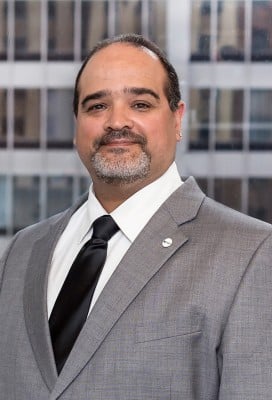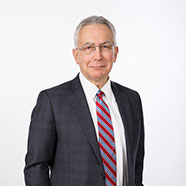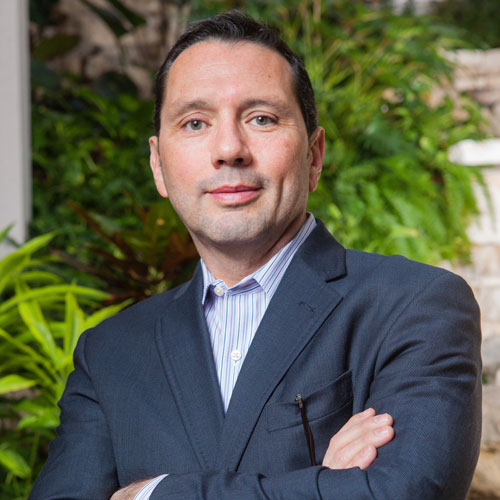Growing up in a single-parent Brooklyn home and attending New York City public schools, Alberto Villaman seemed destined for a life of challenge, but the United Way’s A Better Chance (ABC) program, which puts urban students in better schools, changed his destiny. Villaman’s placement in a high school in Amherst, Massachusetts, led to his acceptance at Columbia University, where he earned his civil engineering degree. His degree first took him to the New York State Department of Transportation (DOT), and then to HAKS, an engineering firm specializing in infrastructure. Today, as senior vice president, he is responsible for quality assurance on some of New York’s largest infrastructure projects, detailed below.
Brooklyn Bridge
One of Villaman’s earliest projects was the 1994 to 1996 rehabilitation of the Brooklyn Bridge for the New York State DOT. The problem was an exit ramp that led onto northbound FDR Drive, which is a three-lane roadway. “You had one lane of traffic coming from the bridge onto northbound FDR Drive, and two lanes coming from the Battery Park Underpass, and there was significant congestion at the meeting point,” says Villaman, who was tasked with widening the ramp. His team put 17 piers in the water, allowing two full additional lanes of traffic. HAKS then restriped everything to create two lanes exiting the bridge onto northbound FDR Drive and only one lane coming from the Battery Park Underpass. “That alleviated traffic considerably, and it was one of the first projects in which I saw tangibly what one can do as an engineer to better people’s lives,” Villaman says.

Gowanus Expressway, Part I
In 2006, the New York State DOT hired HAKS to rehabilitate a portion of the Gowanus Expressway, the southern extension of the Brooklyn-Queens Expressway, which also connects the Brooklyn-Battery Tunnel, the Prospect Expressway, the Belt Parkway, and the Verrazano-Narrows Bridge. It was a busy mess of on and off ramps. The challenge, according to Villaman, was working without significantly impacting traffic on the expressway, which transports 250,000 vehicles per day. When the $152 million job was completed in 2009, HAKS had replaced more than 500,000 square feet of concrete deck, which significantly improved traffic flow by reducing potholes and emergency closures. In addition to being one of the first projects to use an electronic documentation system, which HAKS moved to from a paper-based system in 2006, HAKS had also partnered on the development of a new concrete technology that allowed repairs to last longer. Because there is limited time to make concrete repairs, many materials on the market today can patch a hole and put traffic on it within six hours. Those materials, however, generate so much heat that they create shrinkage cracks, requiring repairs within five to 10 years. The new concrete mix addressed the heat problem, allowing HAKS to repair large sections of concrete and have repair traffic on it 16 hours. Villaman expects the patches to last at least 20 years.
Gowanus Expressway, Part II
As a result of its successful work on the Gowanus Expressway rehabilitation, the New York State DOT selected HAKS to rehabilitate a second portion of the expressway. The ongoing $213 million project, which began in 2010, involves the stretch from the Bell Parkway to the Shore Parkway Interchange. In addition to steel and concrete deck repair, HAKS added a bidirectional ramp. Access was tight, though, so HAKS had to do much of the work at night when an additional lane could be closed. When complete, the ramp will allow traffic direction to be adjusted based on flow, significantly increasing capacity. “Any time you’re dealing with construction, you’re inconveniencing the public,” Villaman says. “But by coming up with innovative ideas to accelerate a portion of work or, if nothing else, just sticking to the schedule and ensuring the job gets done properly, you make a difference.”
Hugh L. Carey Tunnel (formerly Brooklyn-Battery Tunnel)
Recently, HAKS began work on a project to rehabilitate and fortify the Hugh L. Carey Tunnel for the Triborough Bridge and Tunnel Authority. The tunnel—which has airflow systems that were updated by HAKS in 2010—was damaged and largely submerged by Hurricane Sandy. Now, HAKS’ $300 million project will repair the communications and signal systems in the tunnel. When the project is complete in 2018, a more resilient structure will be in place—one designed to better survive another such natural disaster, should it occur. This is also an example of the collaboration Villaman says makes HAKS unique. “Everyone has a vested interest in a job, but if you have a resident engineer or project manager fixated on their point of view and only their point of view, you end up with problems that stall the job,” he says. “My personal philosophy is to partner with stakeholders because at the end of day, getting the job done collaboratively benefits everyone.”

